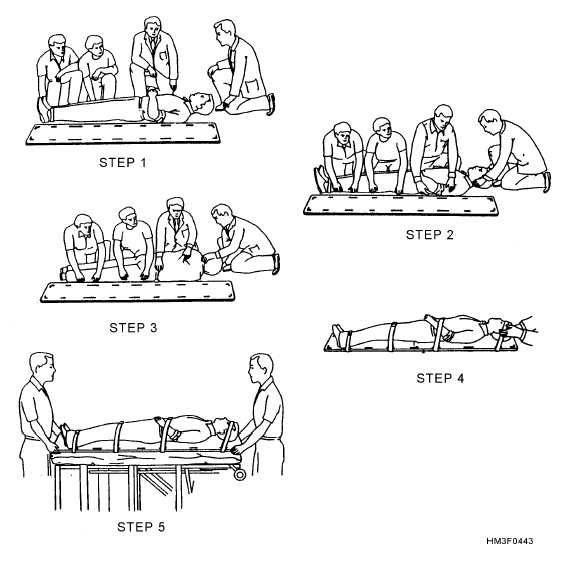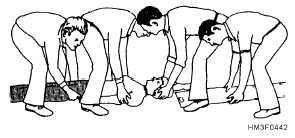body.
NEVER attempt to lift the victim,
however, with fewer than four people.
Evacuate the victim very carefully.
Pelvic Fracture
Fractures in the pelvic region often result from
falls, heavy blows, and accidents that involve
crushing. The great danger in a pelvic fracture is that
the organs enclosed and protected by the pelvis may be
seriously damaged when the bony structure is
fractured. In particular, there is danger that the bladder
will be ruptured.
There is also danger of severe
internal bleeding; the large blood vessels in the pelvic
region may be torn or cut by fragments of the broken
bone.
The primary symptoms of a fractured pelvis are
severe pain, shock, and loss of ability to use the lower
part of the body. The victim is unable to sit or stand. If
the victim is conscious, there may be a sensation of
“coming apart.” If the bladder is injured, the victim’s
urine may be bloody.
Do not move the victim unless ABSOLUTELY
necessary. The victim should be treated for shock and
4-53
Figure 4-43.—Log-roll method of moving spinal cord injury victim onto a backboard.
Figure 4-42.—Straddle-slide method of moving spinal cord
injury victim onto a backboard.




